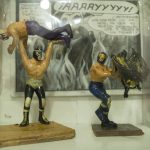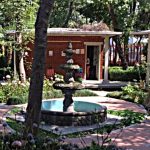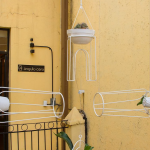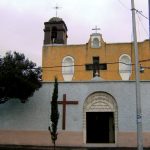 Metro Obrera serves the colonia of the same name just east of the station. It’s also good for the Colonia Doctores to the immediate west. The center of that neighborhood, the Mercado Hidalgo, is just a few blocks from the station.
Metro Obrera serves the colonia of the same name just east of the station. It’s also good for the Colonia Doctores to the immediate west. The center of that neighborhood, the Mercado Hidalgo, is just a few blocks from the station.
The Colonia Obrera is a historical neighborhood begun in the mid-19th century. Originally called El Cuartelito, its many streets were soon crowded. This was to provide housing for the workers from many textile factories that sprung up here, too.
The neighborhood, perhaps not surprisingly, attracted artists, artisans, and activists, too. In its present name, we can hear reference to a then newly-created Industrial Working Class – one good way to translate the name Obrera.
The emergence of an urban working class was to have a profound impact in the decades leading up to the Mexican Revolution. Obrera’s textile and sewing factories lasted, many of them unreformed, even through to the 1980s. The 1985 earthquake destroyed many buildings here. Most notably were a number of the remaining textile factories. This exposed the industry to its final death knell, as many workers died here.
Today, the Colonia Obrera is on the up and up. Served equally by Metros Chabacano and San Antonio Abad, it’s a central and well connected City neighborhood. It’s even seeing a return of artists to some of its former industrial spaces.
The Antique Toy Museum is about 4-minutes walk north of the Metro Obrera station.
 unidad_de_orientacion@metro.cdmx.gob.mx
unidad_de_orientacion@metro.cdmx.gob.mx
 5627.4950 / 5627.4741
5627.4950 / 5627.4741
 https://www.metro.cdmx.gob.mx/
https://www.metro.cdmx.gob.mx/

Nearest at 0.24 kms.

Nearest at 0.25 kms.

Nearest at 0.39 kms.

One of Mexico City's leading galleries for design, art, and furniture . . .

A tiny chapel recalls the long history of the Colonia Tránsito . . .

A little shopping center in the historic Colonia Transito . . .

A community collaborative center in the heart of Colonia Doctores . . .

Mexico City's "most beautiful" cemetery along the Piedad River . . .